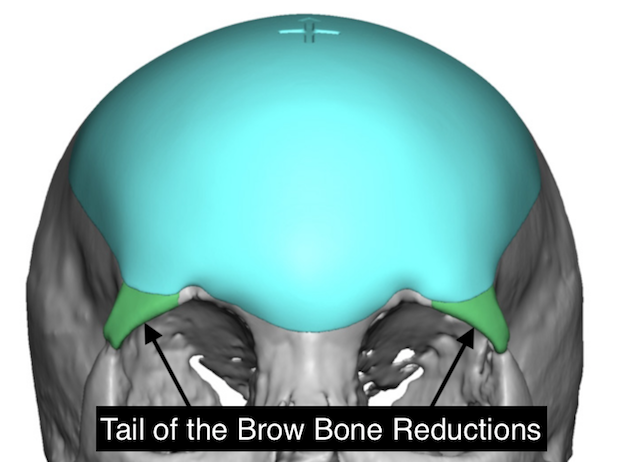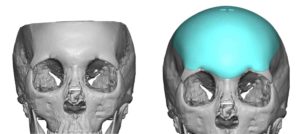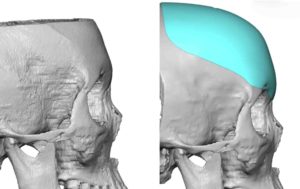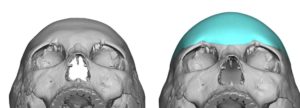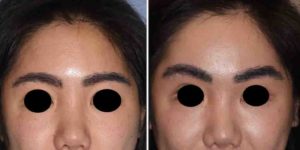Background: The forehead appears on superficial assessment as a relatively flat surface structure with little to contribution to one’s facial appearance. But in reality it is has a substantial contribution to the shape of the face making up to one-third of its surface area. The three aesthetically important forehead structures are the shape and length of the forehead, the position and shape of the eyebrows and the prominence of the brow bones. All of these forehead structures can be surgically modified either separately or all together.
The shape of the female forehead, unlike that of males, has a smooth shape from the frontal hairline down to the brow bones. There is no brow bone prominence or brow bone break. The forehead has a more vertical inclination and a rounder shape between the bony temporal lines. When trying to create an improved forehead shape the custom implant approach is usually best as all the dimensions of its shape can be preoperatively determined. The exact dimensional numbers needed to achieve the optimal result in any patient is not an exact science but an appreciation of the shape that may result can be seen in the 3D planning pictures.
The brow bones in most females are centrally flat and rarely develop any significant prominence due to limited pneumatization of the frontal sinus. (compared to males) However some females have brow bone prominences laterally or at the tail of the eyebrow. This heavier brow bone tail produces a more masculine appearance as well as creates a bony platform for a lower tail of the eyebrow position. Reduction of an isolated tail of the brow bone is typically believed to only be able to be done from a superior direction through a coronal scalp incision. But this belief is neither accurate or provides the best directional access for optimal tail of the brow bone reshaping.
Case Study: This female desired to have an improved forehead shape. Her goals were to have a straighter and more convex forehead shape, less heavy tail of the brows and a more elevated or upward sweep to the tail of the eyebrow.



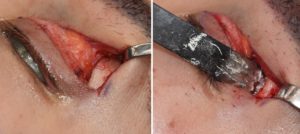
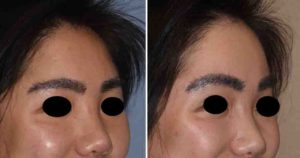
Case Highlights:
1) Forehead contouring can encompass changes of the brow bones, the shape of the forehead and the position of the eyebrows.
2) Increased convexity of the forehead is best done by a custom forehead implant design and placement.
3) The temporal or lateral brow bone can be done through an upper eyelid incision.
4) Removal of a horizontally projecting tail of the brow bone helps provide some lift of the tail of the eyebrow as well.
Dr. Barry Eppley
Indianapolis, Indiana

